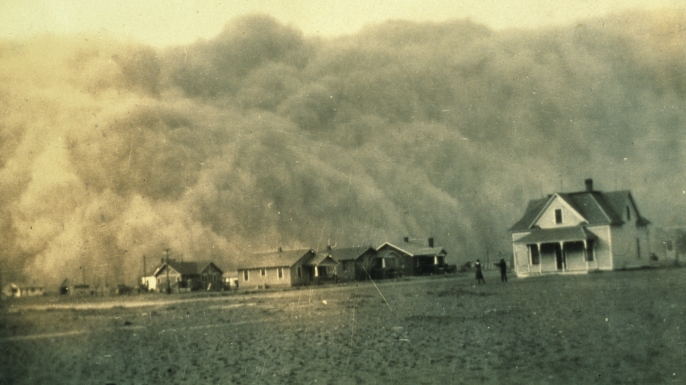In 1931, a drought began in the southern plains and without the deep rooted prarie grasses to keep the soil in place, the topsoil began to get blown around. This led to the Dust Bowl, a series of severe dust storms that darkened the sky and covered everything in a layer of grime.
These dust storms would get into homes through cracks in windows and doors, covering furniture and people in dust. Many people developed "dust pneumonia" after inhaling too much dirt, this included chest pain and difficulty breathing, many people died from this condition as well. Some of these dust storms carried topsoil all the way to Washington D.C. and New York. These dust storms also brought great amounts of static electricity, built up between the ground and the airborne dust. This surplus of static electricity could short out engines and car radios and knock people shaking hands to the ground. Overall, the dust bowl lasted about a decade, killed hundreds of people, and left thousands of people homeless.

http://www.history.com/topics/dust-bowl
http://www.history.com/news/10-things-you-may-not-know-about-the-dust-bowl
No comments:
Post a Comment